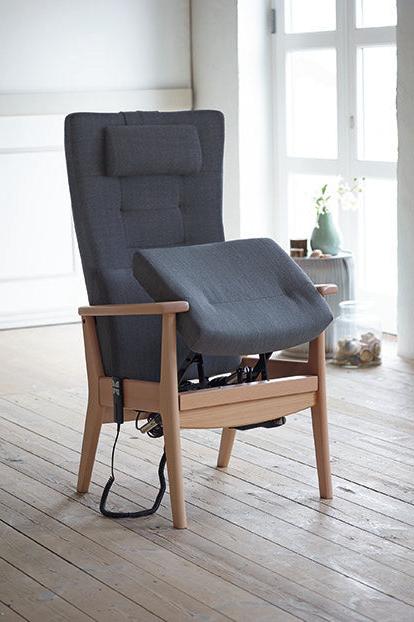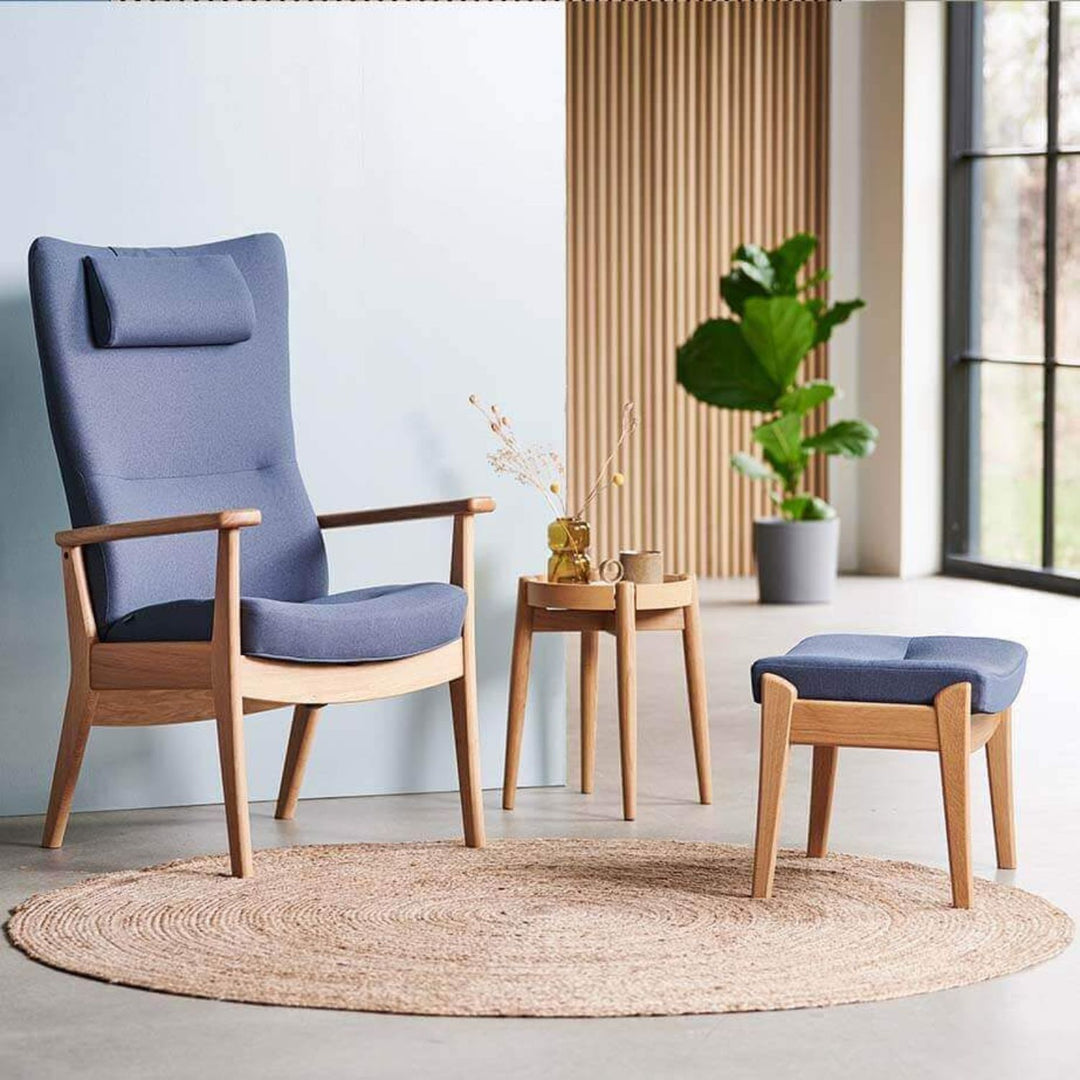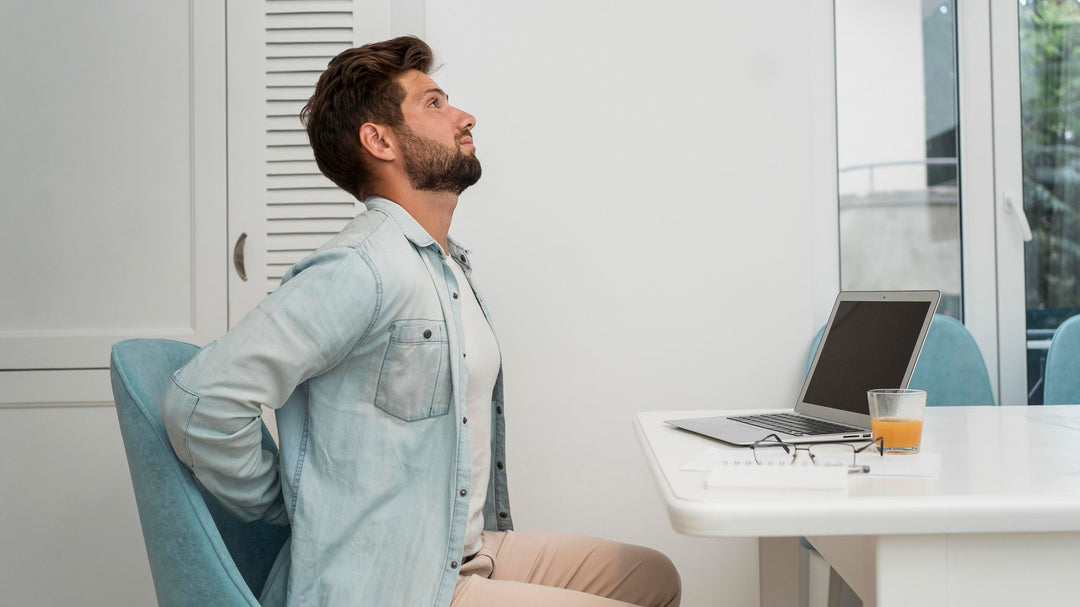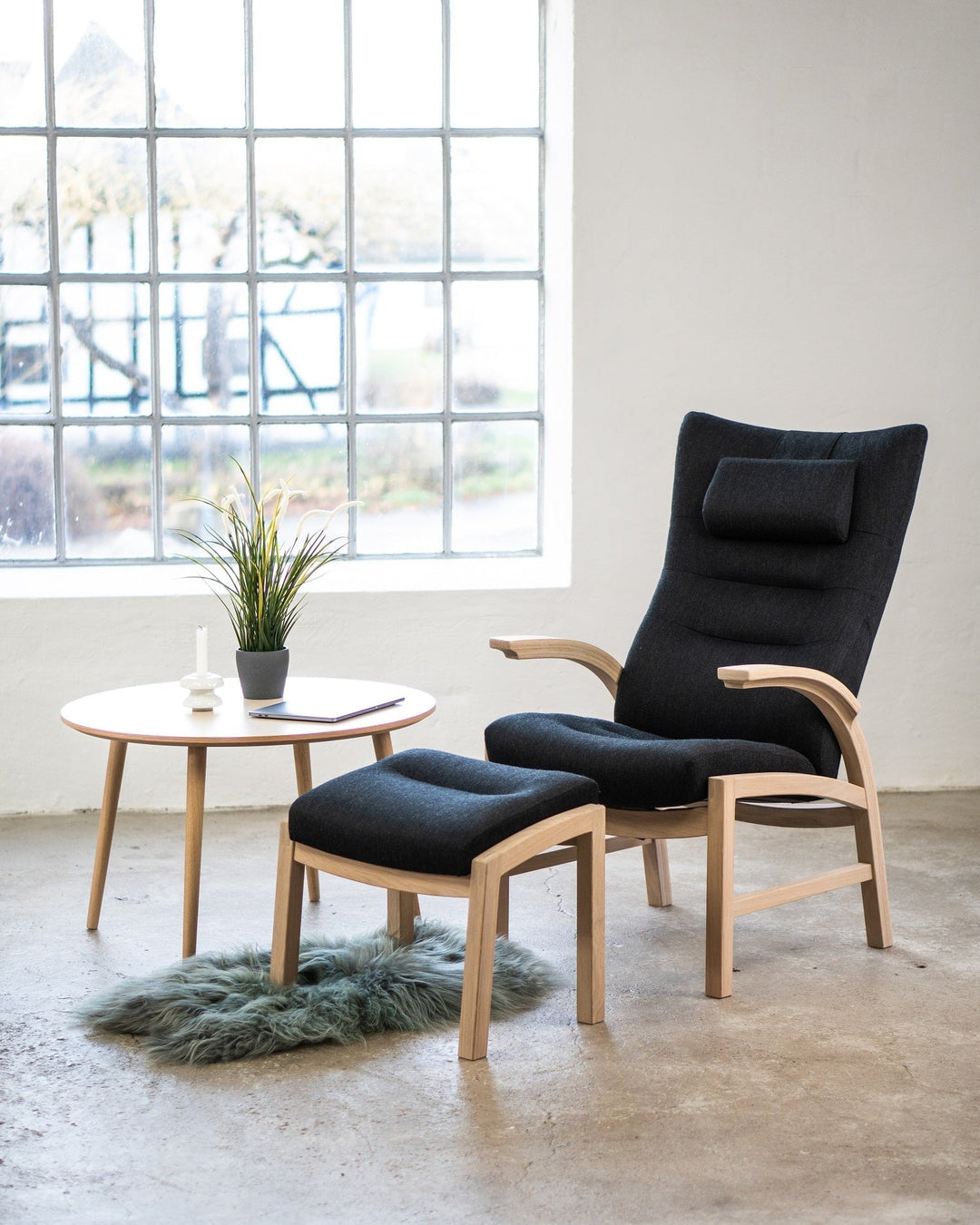
Armchair or Recliner? Here's What You Need to Know Before You Buy
In an era where we value comfort and well-being more, the recliner has become a central part of both private and public spaces. But what makes a recliner special? How does it differ from an ordinary armchair? And how do you choose the best recliner for your needs?
In this guide, we dive into everything you should know about recliners – from ergonomics and design to the best choices for seniors and how to find the perfect model.

The basic differences between recliners and armchairs
Armchairs and recliners have many similarities, but there are key differences that make them suitable for different needs. An armchair is often designed for relaxation in the living room and serves as a comfortable seating area for reading, watching TV or cozy moments. It typically has a fixed backrest angle and can be equipped with soft cushions or armrests for extra comfort.
Recliners, on the other hand, are designed with a greater focus on ergonomics and flexibility. An ergonomic recliner provides the body with the necessary support and is often equipped with a tilt function that allows you to change the sitting position to reduce the strain on your back. Many models also have an adjustable backrest and an integrated footstool, so you can find the most comfortable position.
In short: An armchair is good for shorter periods of relaxation in a fixed sitting position, while a recliner is designed for longer-term comfort and better ergonomic support, especially when you want to rest or vary your sitting position.
Is it better to sit in a recliner or armchair?
The short answer: Yes, you're best off sitting in a recliner!
Recliners are designed with comfort in mind for extended periods of time, making them the best choice if you want optimal support and relief. Ergonomic features, such as an adjustable backrest and footrest, ensure that you can adjust your sitting position and relieve strain on your back, neck and legs.
But that doesn't mean an armchair is a bad choice – the difference lies in the purpose.
According to experts from Cornell University, a good ergonomic chair is characterized by proper lumbar support, an adjustable seat height, and the ability to adjust the angle of the backrest to reduce strain on the spine.
What makes a recliner ergonomic?
An ergonomic recliner is more than just a comfortable place to sit – it is designed to support the body’s natural posture and minimize strain on joints and muscles. One of the most important factors is the chair’s ability to distribute weight evenly, reducing pressure points and improving blood circulation.
Adjustment options also play a key role. A recliner with a tilt function makes it possible to change the sitting position, so that the back receives optimal relief. Many models also have a recliner with a footstool, which allows the legs to rest in a natural position.
Research from the Mayo Clinic shows that prolonged sedentary behavior can lead to poor blood circulation, muscle fatigue and an increased risk of lifestyle diseases. A recliner with an adjustable back and footrest can counteract these effects by improving sitting posture and blood circulation.
The choice of material is important for both comfort and durability. A leather recliner is not only stylish, but also durable and easy to maintain. Alternatively, fabric models with high-density foam or memory foam can provide a soft and supportive seating experience that molds to the body and maintains its comfort over time.
If you want to delve even deeper into the advantages and disadvantages of fabric and leather, as well as oak and beech in the frame, you can read our complete guide to choosing materials in armchairs.
These features make the best recliner an investment in both well-being and ergonomics.
What types of recliners are there?
When choosing the right recliner, there are several different types that vary in materials, functionality, and design. Your choice depends on where and how you plan to use the chair – and what needs it needs to fulfill.
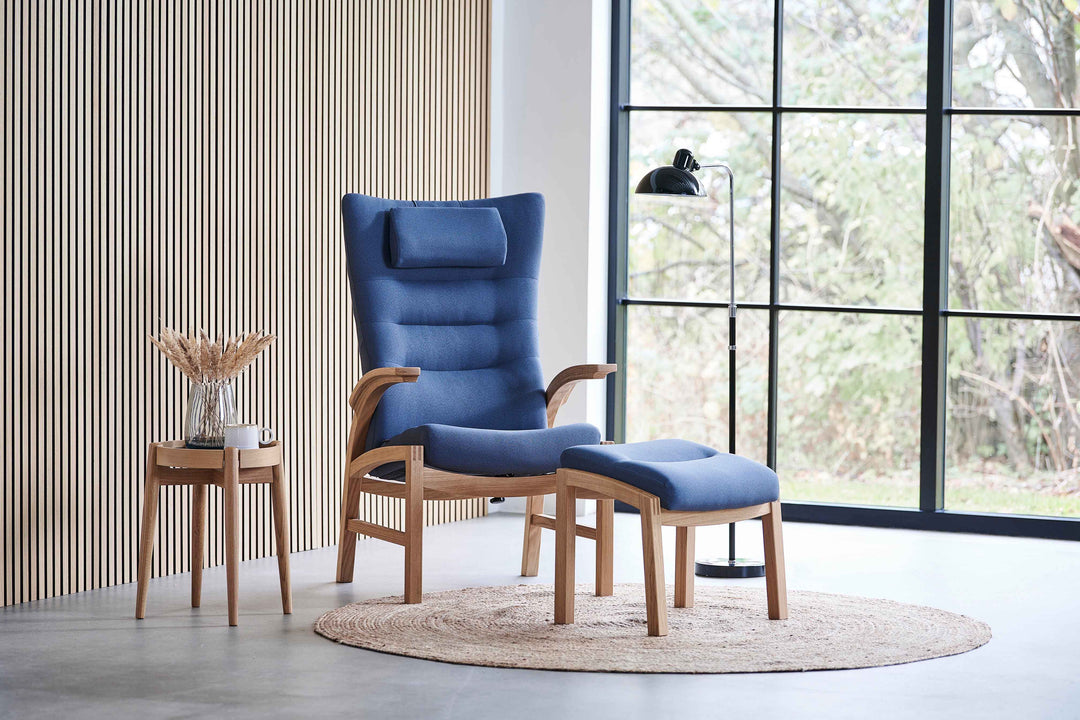
- Leather recliner – A popular choice for those who want a chair that is both stylish, durable and easy to maintain. A leather recliner fits into both modern and classic interiors and only gets more beautiful with time.
- Fabric Recliners – Ideal for those who prioritize a soft and inviting seating experience, fabric recliners come in a wide range of colors and textures that can give a room a cozy atmosphere.
- Recliner with tilt function – This type of chair is created for those who want a more dynamic and natural sitting position. A recliner with a tilt function reduces pressure on the spine and makes it easier to change positions, contributing to better ergonomics.
- Recliner with footstool – If you want to achieve maximum relaxation, a recliner with footstool may be the obvious choice. By elevating your legs, blood circulation improves and the body achieves a more natural resting position.
- Recliners for the elderly – Specially developed models with extra support and an optimal seat height that makes it easier to stand up. A recliner for the elderly often has a solid construction and ergonomic features that ensure both comfort and safety.
Whether you're looking for the best recliner for your living room, waiting room or nursing home, it's important to choose a model that suits your needs. Find inspiration in our selection of recliners here .
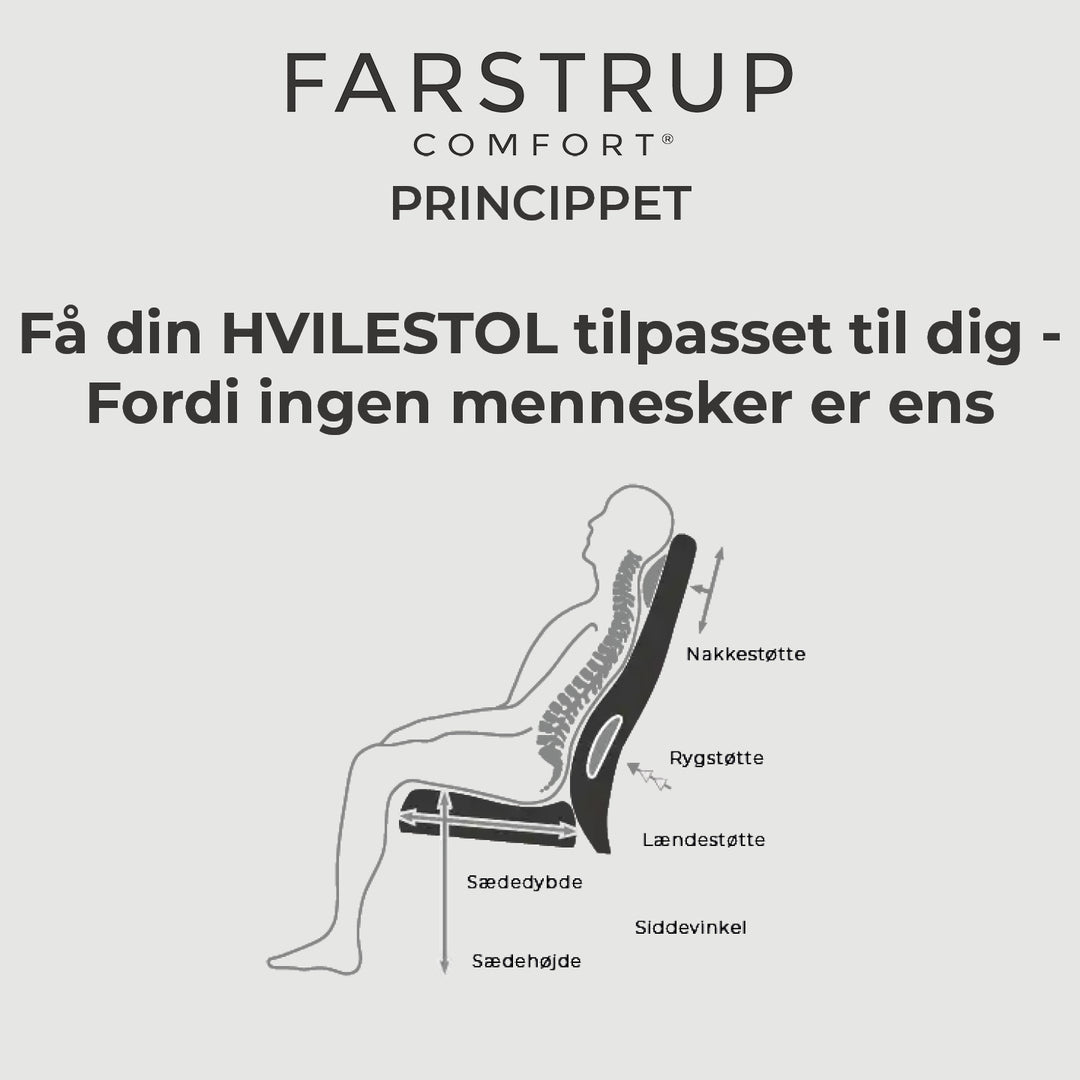
Which recliners are best?
It depends on your needs. If you are looking for a high-quality recliner that will last for many years, the Farstrup recliner is a good choice. Here you get:
- Danish craftsmanship – Produced with a focus on quality and details.
- Ergonomic design – Created to provide the best seating comfort.
- Individual customization options – Choose from different materials, colors and functions.
When choosing a recliner, it's important to focus on ergonomics and support. According to researchers at Cornell University, an ergonomic chair should have an adjustable seat height, backrest, and proper lumbar support to minimize strain on the body. These factors play a crucial role in ensuring a healthy and relaxing sitting position, especially if the chair is used for extended periods of time.
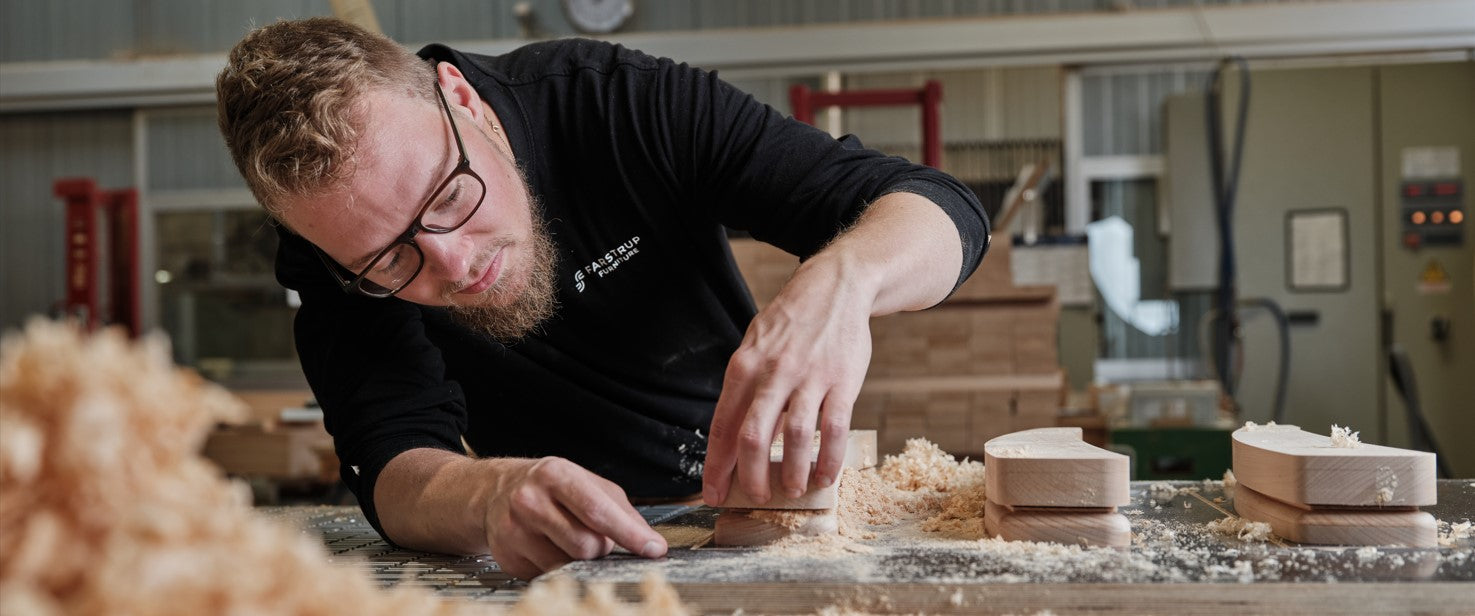
At Farstrup, we tailor your recliner to your wishes and functional requirements.
Therefore, you get a recliner that is tailored exactly to you and your ergonomic needs.
What are the best recliners for the elderly?
When it comes to recliners for the elderly, comfort, functionality and ergonomic support are crucial factors. A good recliner should not only be comfortable, but also provide optimal support for the body and make it easier to get up. For the elderly, it is especially important to choose a model that combines stability, safety and comfort. Here are some of the most important features to look for:
- Easy to get up from – A recliner for seniors should have a higher seat height and a firm seating surface that reduces strain on the knees and hips. A recliner with a tilt function or one with a lift function can be a great advantage for people with limited mobility.
- Optimal lumbar support – An ergonomic recliner should offer well-balanced back support, which reduces the risk of back pain. Adjustable backrests and built-in ergonomic padding can help reduce back strain and ensure a healthy sitting posture. Read more about the importance of an ergonomically correct sitting posture in our guide.
- Stable and safe construction – A solid wooden or metal frame ensures that the chair is stable and does not tip over when you sit down or stand up. Non-slip feet or rubber-coated legs can increase safety and minimize the risk of falls.
- Soft but firm upholstery – To ensure proper comfort, a recliner should have upholstery that is sufficiently soft without sinking in too much. A recliner in leather or quality fabric with pressure-relieving foam can provide an optimal sitting experience without the chair being too hard or too soft.
- Armrests with support – Well-placed armrests make it easier to stand up and relieve pressure on your shoulders and arms. They should be wide enough to ensure a comfortable resting position, but firm enough to provide the necessary support.
- Materials that are easy to maintain – A recliner in leather or durable textile upholstery is an advantage as they are easy to clean and stay nice for many years.
- Extra features for increased comfort – Many recliners for the elderly are available as a recliner with a tilt function, adjustable footrest and integrated headrest, which can make a big difference in daily comfort. A recliner with a footrest allows you to elevate your legs.
When choosing the best recliner , it's important to consider individual needs. Consider whether the chair will be used daily, whether electrical adjustment is needed, and which features will best support the user's comfort and mobility.
Read more in our guide to retirement and senior chairs here .
Farstrup recliners – Danish design and world-class comfort
A good recliner is not only an investment in comfort, but also in well-being. At Farstrup, we create recliners with a tilt function, leather recliners, and specially designed recliners for the elderly, all of which have one thing in common: they are built to last and provide optimal support.
Want to experience the best recliner for your needs? Visit one of our retailers or explore our selection online.
